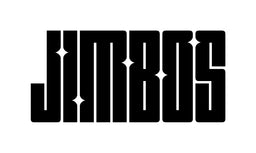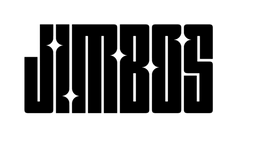The Right Way to Rinse and Dry a Large RV or Motorhome
Rinsing and drying a full-size RV can feel overwhelming — miles of panels, windows, and chrome trim that seem impossible to finish before the sun leaves water spots behind. But with the right technique and tools, you can dry your rig quickly, safely, and streak-free every time. Here’s how to rinse and dry your RV like a pro without scratching or wasting hours.
Estimated Reading Time: ~12 minutes
Why Rinsing and Drying Properly Matters
Rinsing and drying may sound simple, but they’re two of the most common steps where RV owners damage their paint or coatings. Poor rinsing leaves behind soap residue and minerals that can etch into the surface. Rushing the drying process can cause swirl marks or water spots that are hard to remove later.
The key is using the right water pressure, drying technique, and microfiber tools that are large enough to handle your RV’s massive surface area.
What You’ll Need
- → A high-quality hose or pressure washer (40° nozzle recommended)
- → The Super Soaper for pre-soak rinsing
- → Deionized or filtered water (optional but reduces spotting)
- → Massive Drying Towel for efficient drying
- → Tough As Shell Ceramic Spray for post-wash protection
Step-by-Step: How to Rinse and Dry an RV the Right Way
Step 1 – Rinse Thoroughly from Top to Bottom
Always start from the roof and work downward. This ensures that dirt and soap flow off the panels instead of drying in streaks. If you use a pressure washer, choose a wide-angle tip (like 40°) to safely rinse without damaging decals or seals.
Step 2 – Use The Super Soaper for Lubrication
Before final rinsing, apply a layer of The Super Soaper using a foam cannon or pump sprayer. This step adds lubrication and helps remove any remaining grime. Let it dwell for a minute before rinsing it off again with steady water flow.
Step 3 – Perform a “Sheet Rinse”
After your final foam rinse, remove the nozzle from your hose and allow the water to flow freely over the panels. This technique “sheets” the water off, minimizing beads and cutting drying time by 50% or more.
Step 4 – Dry Using the Massive Drying Towel
Once the water has sheeting off, fold your Massive Drying Towel into quarters and gently lay it flat on the surface. Drag it across the panel using the towel’s weight rather than pressure. The dual-pile microfiber will absorb gallons of water quickly without streaking.
Step 5 – Blow Dry Remaining Water
If you have access to a leaf blower or dedicated car dryer, use it to blow water out of mirrors, seals, and vents. This prevents hidden drips later.
Step 6 – Apply Tough As Shell Ceramic Spray
Once fully dry, mist Tough As Shell onto a microfiber towel and wipe it over the surface for long-lasting shine and protection. This also helps future washes rinse cleaner and dry faster.
Best Drying Tool for RVs: The Massive Drying Towel
Save time and prevent swirl marks with the Massive Drying Towel — ultra-soft, streak-free, and built for large vehicles.
Buy on Jimbo’s Detailing Buy on AmazonHow to Avoid Water Spots When Drying an RV
Water spots happen when minerals are left behind as water evaporates. To avoid them:
- → Wash and rinse in the shade or early morning.
- → Avoid washing on hot panels or under direct sunlight.
- → Use filtered or deionized water for the final rinse.
- → Dry immediately after rinsing — don’t let water air dry.
- → Use Tough As Shell regularly to reduce water adhesion and spotting.
Rinsing and Drying Comparison Chart
| Method | Time Required | Water Spot Risk | Recommended Tools |
|---|---|---|---|
| Traditional Hose Rinse | 45–60 minutes | Medium | Super Soaper + Massive Drying Towel |
| Sheet Rinse + Blow Dry | 30–40 minutes | Low | Filtered water + blower + drying towel |
| Filtered Water Rinse (DI) | 25–30 minutes | Very Low | DI Rinse System + Tough As Shell |
Pro Tips for Faster, Safer RV Drying
- → Fold your drying towel often to use fresh, dry sections.
- → Dry glass and mirrors first before water dries.
- → Use a separate towel for lower panels to avoid cross-contamination.
- → Apply Tough As Shell to wet panels for a drying aid effect.
- → If working alone, dry in sections to prevent spotting.
Upgrade Your Protection: Tough As Shell Ceramic Spray
Get long-lasting water beading and easier drying with Tough As Shell — spray-on protection that saves time and effort.
Buy on Jimbo’s Detailing Buy on AmazonBest Practices for Maintaining a Spot-Free Finish
Even if you wash often, following these small habits will keep your RV cleaner longer:
- → Store your RV under cover or use a high-quality RV cover to reduce dust buildup.
- → Rinse the front cap after long drives to remove bugs and salt.
- → Keep a bottle of The Super Soaper ready for touchless rinses between full washes.
- → Apply Tough As Shell every 4–6 weeks to maintain slickness and gloss.
- → Always dry with clean, edgeless microfiber towels to prevent scratches.
Related Reading
- How to Foam Wash an RV Using The Super Soaper
- How to Clean Bugs, Sap, and Road Grime Off Your RV
- How to Wash an RV Without Leaving Water Spots
- Touchless RV Washing: Is It Safe and Effective?
- The Ultimate Guide to RV Detailing
FAQs
How do I rinse an RV without water spots?
Use filtered or deionized water, rinse in the shade, and dry immediately using the Massive Drying Towel. A sheeting rinse also helps reduce leftover droplets.
Can I air dry my RV after rinsing?
Not recommended. Air drying can leave minerals behind, causing spots or streaks. Always towel or blow dry for best results.
What’s the best way to dry an RV quickly?
Use a combination of a blower for crevices and the Massive Drying Towel for panels. The towel absorbs water quickly without streaks.
Do I need to dry after using deionized water?
Technically, DI water leaves no spots, but a quick towel wipe ensures a perfect, streak-free shine.
Should I use a drying aid?
Yes — Tough As Shell works perfectly as a drying aid to add slickness, shine, and hydrophobic protection.



